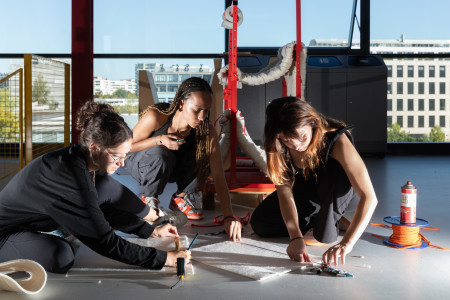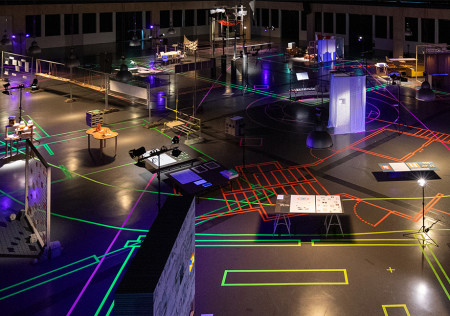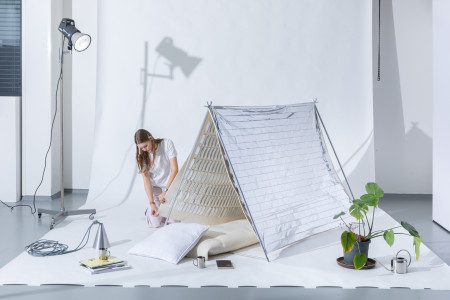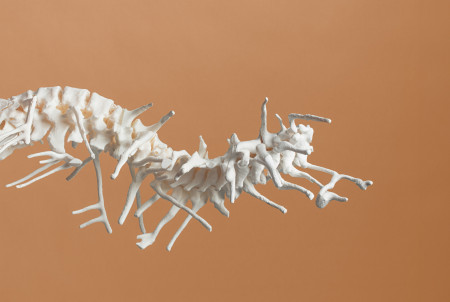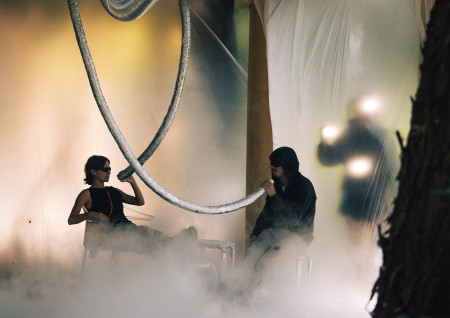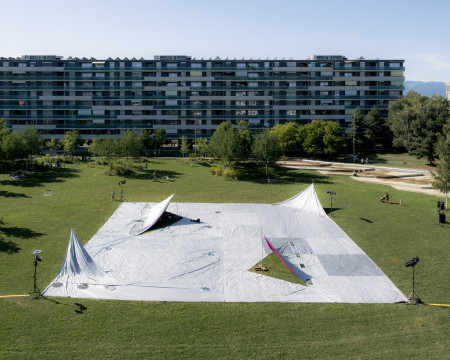- The school
- Studies and Research
- BACHELOR
- MASTER
- DOCTORATE
- RESEARCH
- TRANSDISCIPLINARITY
- POOLS
- CONTINUING EDUCATION
- Continuing education 2025-2026
- Artificial Intelligence, initiation
- Artificial Intelligence, Advanced
- Artificial intelligence open-source, ComfyUI
- Creative coding
- Engage with drawing
- Frame-by-frame animation
- 3D exhibition modeling in SketchUp
- 3D modeling, Blender
- Point cloud scanning
- Documentary podcast
- Serious games
- For students
- Studying at the HEAD
- InfoLab
- Living in Geneva
- Tuition fees and sholarship
- Library
- Regulations and instructions
- Projects
- Events
- Press
- Partnerships and prizes
Master in Interior Architecture
2026 ADMISSIONS
- Register for the online information session here: Tuesday 17 February 2026 – 6:30 p.m.
- Open day : 17 January 2026
- All information and registration details here
MAIA – Master of Arts in Interior Architecture
Interior Ecologies
The Master of Arts in Interior Architecture (MAIA) is a two-year professional programme that views interior architecture at the intersection of space, ecology and contemporary society. Space design is seen as multidimensional, articulating the diversity of interior spaces, objects and media that configure reality on many paths and scales, from material to virtual, and from local to global.
The programme focuses on mastering the professional aspects of interior architecture and delves into the public, private, and commercial spheres of contemporary interiors, placing special emphasis on ecology, digital innovation, and inclusivity paradigms. The MAIA programme tackles contemporary environmental and societal challenges, such as the circular economy, carbon footprint, and humanitarian design. It explores the implications of new ecological paradigms, including post-human and non-human perspectives, for interior architecture as a discipline across its various professional domains: space design, product design, new media, research, curatorial, and editorial practices.
The professional dimension of the programme includes full-scale project realisations and multidisciplinary training that explores new interior ecologies. Never in history has interior architecture produced so many spaces in which the human and the non-human (data centres, greenhouses, botanical installations, etc.) find themselves assembled in new configurations, calling for new ecosystemic thought and action.
Curriculum
The programme is structured over 4 semesters:
MAIA 1 – Glossaries: Sustainable, Post-human Interiors
MAIA 1 explores the glossaries that characterize contemporary ecology and their implications for interior architecture. From the postmodern concept of sustainability in the 1980s to that of the Anthropocene in the 2000s, and from the contemporary paradigms of the Post-human to the Post-natural and the Cthulucene in the 2010s, the semester is structured around different modules that investigate the themes of Natural History, Plural Bodies, Animals, and Plants in interior spaces.
MAIA 2 – Assemblages: Technology, Objects, Mediated Interiors
MAIA 2 focuses on the assemblages among objects, technologies, and media within interior environments. Considering any form of material and virtual ecology as architectural—from material prototypes to generative AI—the semester is practice-based and structured around a core studio, with specific modules on Circularity, Building Components, and Digital Media.
MAIA 3 – Investigations: Design, Research, Multiscalar Interiors
MAIA 3 investigates research-driven practices of design, examining how interior spaces construct multiscalar ecologies from within. The semester combines theory and design to address urgent challenges such as post-natural ecologies, biodiversity loss, and design politics. It integrates a core studio with dedicated modules on Curatorial Practices and the Written Thesis, guiding students through a non-linear process to establish their intellectual discourse and graduation pathways.
MAIA 4 – Diploma: Professional Competences
The final semester of MAIA is centered on each student’s graduation project. A core studio shapes the semester, complemented by core-skills seminars on professional competencies that will help prepare students for post-graduate life. Never before in history has interior architecture produced so many spaces where the human and the non-human come together in new configurations, calling for new ecosystemic action.
------------------------------------------------------------------------------------------------------------
Access the MAIA website : www.head-maia.ch
Access the MAIA Instagram account : @head_maia
------------------------------------------------------------------------------------------------------------
Teaching: Interdisciplinarity and media
MAIA envisions any form of media as potentially architectural, from writing to photography, drawing to cinema. The programme explores contemporary interiors as platforms of ‘expanded media’, examining their belonging to different places and temporalities, whether physical or virtual, close or distant, ultimately exploring the role of interiors in the construction of contemporaneity.
Professionalisation and Network
MAIA students regularly work in cooperation with designers on professional projects carried out together with institutions and partners, leading to a career of international impact. The department is visible at international exhibitions and platforms, such as the Milan Design Week and The Future of Humanitarian Design, a research project on humanitarian policy and architecture developed with the Geneva Graduate Institute and the University of Copenhagen. MAIA includes permanent cooperation with the Joint Master of Architecture (JMA) of the schools of Geneva, Fribourg and Burgdorf, and with the École Camondo in Paris.
* MAIA allows its graduates to apply for registration in the Swiss Professional Register of Architects (REG A, Interior Architecture).
Admission
To apply for the admission competition, candidates must hold a bachelor’s degree in a field related to spatial design from a university or a university of applied sciences (HES)—or an equivalent diploma.
International Community
MAIA students work with an international community of interior designers, architects, artists, curators, and experts from different disciplines, constructing interior spaces that are articulated with the parallel narratives of magazines, films, exhibitions or publications. This transversal approach creates an arena of experimental conditions that proves challenging for teachers, students and real users.
Lecturers, speakers & guests include:
Youri Kravtchenko, Principal at YKRA Interior Design. Geneva
Philippe Rahm, Principal at Philippe Rahm Architectes. Paris
Alessandra Covini, Giovanni Bellotti, founders, Studio Ossidiana. Rotterdam
Jolanthe Kugler, Curator, MUDAC. Lausanne
Daniel Zamarbide, Galliane Zamarbide, founders, BUREAU. Geneva-Lisbon
Leonid Slonimskiy, Principal at Kosmos Architects. Moscow
Apropå, Studio for Lighting and Circular design. Geneva
Simon Husslein, Principal at Husslein Design. Zurich
Lluís Alexandre Casanovas Blanco, Architect and Curator. Madrid
Damien Greder, Principal at Typical Office. Principal at Hypothesis Atelier. Geneva
Paule Perron, co-founder of the architectural collective minor. Geneva
Aida Navarro Redón, Architect. Madrid
Head of Department
Javier Fernandez Contreras
Scientific deputy
Valentina De Luigi
Secretary
Lucie Landenbergue
Assistants
Valentin Calame
Alexandra Miskufova
Manuel Rossi
David Viladomiu Ceballos
MAIA: Admissions
Degree awarded:
Master of Arts HES-SO in Interior Design

